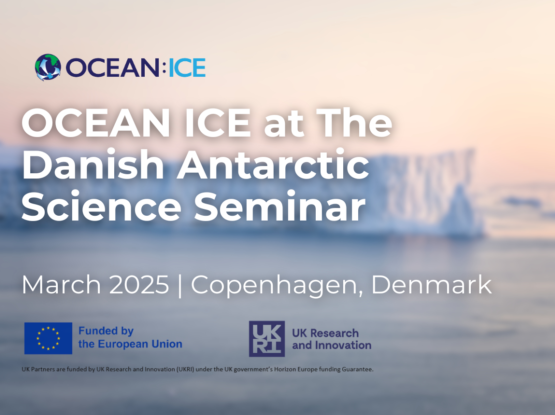OCEAN ICE was presented at the Danish Antarctic Science Seminar in early March. This annual meeting is an opportunity for the Danish Antarctic science community to get together and present new research, discuss new initiatives and to network and build collaborations across institutes. It was held at DMI this year but rotates around 5 different hosts, where each organisation has half an hour to present an overview of current, recent and planned research. After the meeting there was an ECR networking session on the roof terrace and an opportunity for the Danish SCAR committee to meet. The programme included a session on Antarctica InSync with an invited talk from Alexander Haumann, following on from which was discussion on the formation of a national committee and how Danish scientists can contribute to the programme. We expect there to be a number of projects that will benefit from collaboration with other European countries under this and our ECR community will take the lead in developing these ideas.
Other highlights were i) new results from a recent circumnavigation of Antarctica by Twin Otter aircraft by Prof. Rene Forsberg of DTU Space and colleagues for the SCAR Antarctic Rings initiative, ii) data rescue efforts focused on aerial photos from the 1930s taken by Norwegian - Danish expeditions pioneered by Anders Bjørk of Copenhagen University and iii) a sneak preview of initial processed data from the recent oldest ice core drilled at Little Dome C presented by Prof Christine Hvidberg and colleagues of the Niels Bohr Institute.
Other presentations focused on remote sensing work looking at both P-band radar calibration for ESA’s biomass satellite, a new dataset for Antarctic air temperatures based on MODIS surface temperatures and contributions to ESA’s 4D Antarctica project. There were also talks about new parameterisations of ice flow based on anisotropy in fast moving streams and some good discussions of using isotopic signals from shallow cores to understand synoptic scale systems. The newly updated SUMUP dataset, which covers SMB and firn observations over both Greenland and Antarctica and was also presented by Baptiste Vandecrux from GEUS. The DMI contribution to the meeting focused on new coupled model results with EC-EARTH and the PISM ice sheet model for Antarctica as well as the climate projections and process studies examining atmospheric rivers carried out with HCLIM and also part of the OCEAN ICE project. The results from the mass budget work, to assess freshwater fluxes from Antarctica that we’ve done in WP3 were also shown and we discussed also the up and coming work NASC have been doing with the impact of atmospheric forcing.
Next year’s DASS will be held at the Niels Bohr Institute on the first Thursday in March as usual.
The author of the article - Ruth Mottram (DMI)


